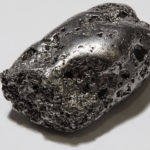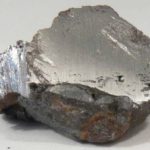Interesting facts about copper
 Such a metal as copper is very interesting from a chemical point of view, and also from a practical one. At one time he had a great influence on the development of human civilization, because once people did not know bronze and did not know how to smelt iron. But with the development of science, copper has not lost its value, and it is still actively used in various fields of industry.
Such a metal as copper is very interesting from a chemical point of view, and also from a practical one. At one time he had a great influence on the development of human civilization, because once people did not know bronze and did not know how to smelt iron. But with the development of science, copper has not lost its value, and it is still actively used in various fields of industry.
People learned to mine and smelt copper about 5-6 thousand years ago.
It was the first metal that ancient people began to massively use.
The copper age lasted for about 1000–2000 years in different lands, and ended when people learned how to smelt bronze from a mixture of copper and tin.
The original Latin name for copper (“cuprum”) comes from the name of the island of Cyprus, one of the first places where the smelting of this metal began.
Until now, most electrical cables around the world are made of copper.
Copper nuggets are much more common than iron nuggets, despite the fact that iron is one of the most common metals.
Copper prevents the spread of bacteria on its surface. Therefore, often door handles and similar hardware are made of bronze – it is stronger and at the same time has similar properties, since there is a lot of copper in it.
Copper tools when struck against each other can not cause a spark, unlike iron ones.
Often copper is added to jewelry alloys to increase their strength. Gold itself is too soft a metal.
The average consumption of copper for an adult is about 0.9 milligrams.
Copper ranks third in the world in production and consumption, second only to iron and aluminum.
In Nepal, copper is considered something of a sacred metal. Locals believe that it helps fight disease, and they often drink water into which they throw copper coins.
Due to the high corrosion resistance of copper from it began to make capsules for the disposal of toxic and radioactive waste.
Copper is one of the metals that is actively recycled and reused. On average, the world processes about 80% of the total copper.
In ancient Egyptian ruins, archaeologists found copper water pipes, which are almost 5 thousand years old. They were fully operational at the time of the find.
Despite the fact that copper itself is environmentally friendly, the process of its extraction fairly pollutes the environment. The American lake Berkeley Pete, which is the most toxic in the world, was formed in a closed pit where copper was previously mined. Its waters are so toxic that they kill unwary waterfowl perching on it.
Most of the copper in the human body is contained in the liver.



























